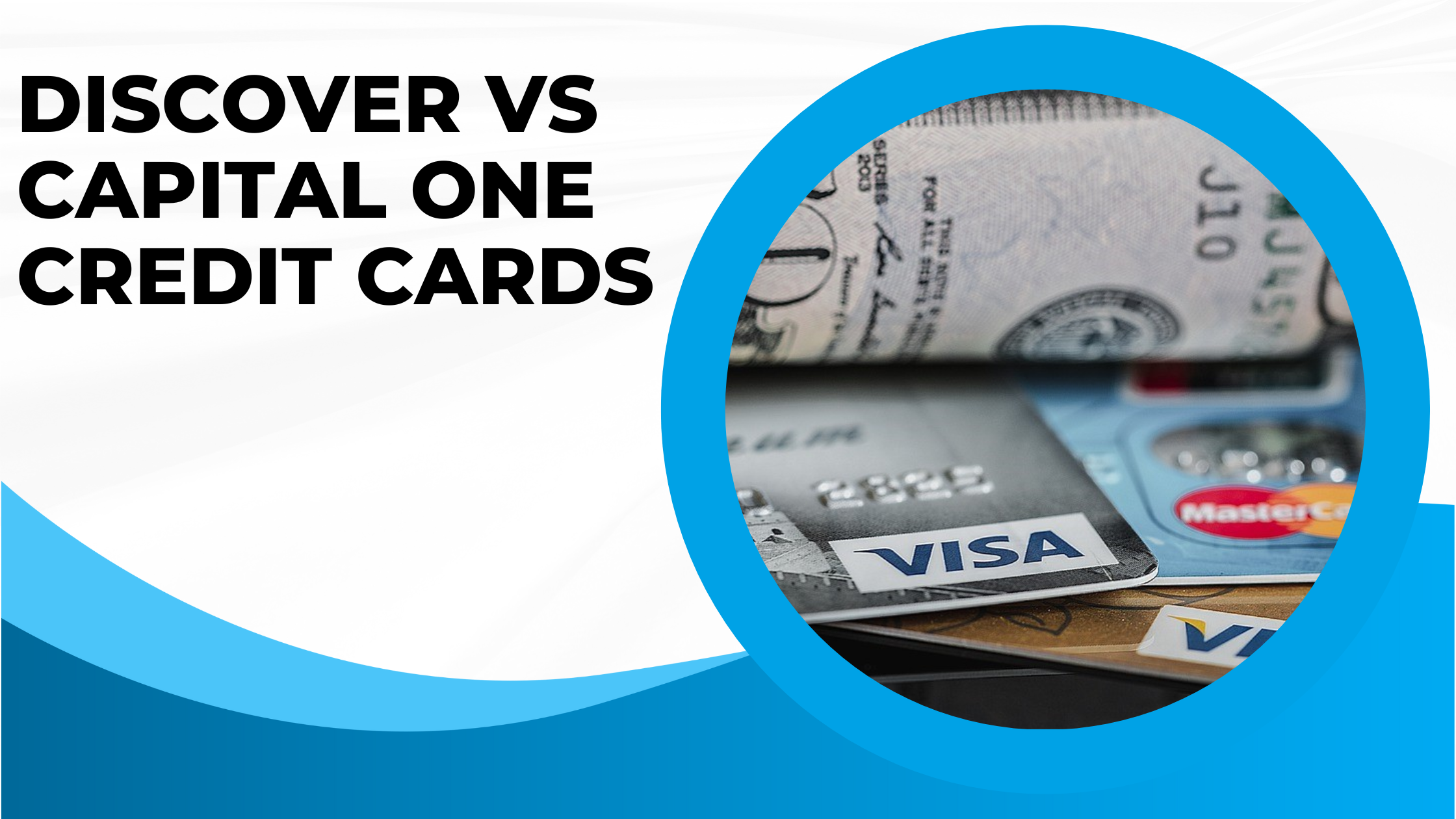Discover, and Capital One are two of the most reliable financial services providers. In a way, “Discover vs. Capital One” is the kind of debate that is inevitable, considering where these two financial giants have positioned themselves in the industry.
The choice between the two often comes down to personal preference. However, that doesn’t mean that there aren’t some objective factors that either make the two comparable or help one stand out over the other.
Table of Contents
ToggleAbout the Two Financial Giants: Discover and Capital One
If you are new to using credit cards or are looking to get a new one, there’s a very good chance that you are going to come across at least four major brands (likely in this order):
- Visa
- MasterCard
- American Express
- Discover
- Capital One
According to The Nilson Report, Capital One might be slightly bigger than Discover in terms of credit cardholder purchases:
- Capital One credit cardholders typically spend about $336.91 billion a year
- Discover cardholders typically spend about $139.03 billion a year
Also notable is that Capital One has over 60 million credit cardholders in the US, while Discover has just under that figure at around 57 million.
These numbers, however, don’t tell us much apart from the fact that both credit card brands are wildly popular, and their customers collectively spend billions of dollars every year.
Discover vs. Capital One: Differences
As a company, Discover has a history of disruption as far as the credit card industry is concerned because it was one of the very first brands to offer customers no-fee credit cards.
Discovery now has travel rewards, secured credit, and even cashback options.
On the other hand, Capital One is a highly reputable and widely known credit provider across the US. It has an impressive array of cash rewards, earning miles, and credit-building offers.
Here are some of the key differences between the two credit card brands:
Physical Branches
Capital One has physical branches in several states, including Washington, DC, New Jersey, Connecticut, Maryland, Louisiana, New York, Texas, Virginia, and Delaware.
Discover does not have physical branches.
Additionally, Capital One allows you to complete banking transactions at some of the Capital One Cafés across the country.
In contrast, Discover prides itself on being an exclusively online financial service provider.
Credit Card Acceptance
Since Capital One credit cards are typically backed by either Visa or MasterCard, they have a wider acceptance globally than Discover cards.
Free Credit Score Checks
Both credit cards offer some version of free credit score checks.
With your Discover card, you can use their free FICO Score service with the Discover Credit Scorecard.
With Capital One credit cards, you can use the free VantageScore 3.0 offered in conjunction with CreditWise.
Even though most lenders prefer using the FICO score, both services can help you discover your credit ranking and are available to use.

Discover vs. Capital One: Key Features Compared
Some similarities stand out for both cards. These include:
- Both cards require you to put down a security deposit
- Neither of the cards charges you an annual fee nor any foreign transaction fees
- Both cards can be offered to people who are trying to rebuild their credit.
Approval isn’t guaranteed because there are income and other requirement thresholds to be met
Credit Limit and Security Deposits
A secured card often requires you to put down a security deposit equal to the credit limit you want.
For example, if you are looking for a credit limit of $1,000, then your security deposit with be $1,000.
The fundamentals are pretty much the same with the secured credit cards from both vendors, except for some minor differences:
- Capital One Secured MasterCard: With this card, you can get a line of credit for the amount of money you deposit. However, those who qualify can deposit as little as $49 or $99 to get the minimum credit limit of $200.
You can keep increasing that credit limit by depositing more money. - Discover it Secured Credit Card: This option offers you a minimum deposit of $200 for a similar credit limit and a maximum deposit of $2,500 for a similar credit limit.
The Better Card: Capital One Secured MasterCard
In this instance, the Capital One Secured MasterCard is better than the Discover it Secured Credit Card as it allows lower deposits.
Also, it allows you to make deposits in small increments as you build up your credit limit. Since making these deposits can be difficult for people trying to rebuild their credit, having such options makes life much easier.
Credit Card Interest Rates
- Capital One Secured MasterCard: This card has a variable APR of 26.99%
- Discover it Secured Credit Card: This brand offers an introductory APR of 10.99%. This applies to balance transfers for the first six months. Then it moves to a 22.99% variable APR.
The Better Card: Discover It Secured Credit Card
While both cards have a high ongoing interest rate, this is to be expected because these particular options are designed for people who have bad credit and are trying to rebuild it.
The Discover it Secured Credit Card is slightly better than the Capital One option since it offers a low introductory interest rate for the first six months and a lower ongoing variable APR.
Carrying debt on either of these cards is expensive due to the high rate.
Credit Card Rewards
One of the biggest avenues for competition in the credit card industry is the kind of reward each brand offerrs. Here’s how these two brands stack up against each other on that front:
- Capital One Secured MasterCard: No rewards
- Discover It Secured Credit Card: This is the one thing that sets this card apart from other secured credit card options on the market. Clients earn 2% of their cashback when they make everyday purchases at a restaurant or a gas station.
This covers up to $1,000 spent every quarter. You also get 1% of your cashback on all other purchases.
Discover will offer to match all your cashback at the end of your first year as a new client as a sign-up bonus. You don’t have to spend a specific minimum or maximum amount. They simply match you, dollar for dollar.
The Better Card: Discover It Secured Credit Card
When it comes to rewards, a Discover card is a much better option without question. Not only does it allow you to build up your credit slowly, but it also gives you some of your money back while you’re spending.

The Discover vs. Capital One debate will rage on.
This is especially true when you consider that both brands have various other credit cards with their different competitive edges.
Ultimately, it comes down to who offers you the best value for your money based on your specific financial needs.

